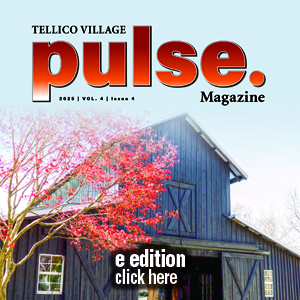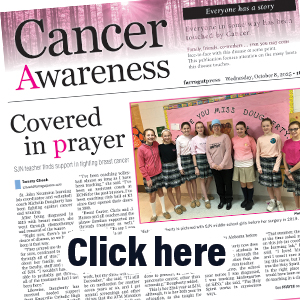Sign Ordinance amend 1st Read: 4-1 in favor
Action to amend Town of Farragut’s sign ordinance on first reading, by replacing the ordinance with a revised one, left one alderman questioning the purpose of replacing it in its entirety during Farragut Board of Mayor and Alderman’s meeting Thursday, Feb. 9.
In a 4-1 vote, Alderman David White voted against the action while Mayor Ron Williams, Vice Mayor Louise Povlin and Aldermen Scott Meyer and Drew Burnette voted in favor of replacing the ordinance on first reading Feb. 9.
The ordinance change will need to pass another reading before it goes into effect.
During discussions, board members also considered new amendments, which were added to the revised ordinance. Those included:
• Have definition of athletic field in the sign ordinance the same as the definition in the lighting ordinance.
Resident Michael Wilson asked that any language removed be “stricken in red, and if there is no language stricken, that it be allocated in your comments on the agenda item or on the document itself.”
He also cited the section regarding public property and that White wanted an election sign on public property.
“… It seems the Town would be denying that based on content,” Wilson said about election-type signs, asking the Board to reconsider that section before the next election.
While reviewing the sign ordinance, Bart Hose, assistant Community Development director, said Town staff and Visual Resources Review Board saw replacing the existing ordinance with a revised version as a cleaner, easier method.
Hose said potential amendments to improve enforcement and clarify some sections came to light. Those include:
• The re-introduction of “General Occupant Signs” as a permitted type of sign. “This sign type includes small wall plaques and similar informational signs located around the entrances to buildings.”
• Changes to the provisions for “Peripheral Accessory Signs” to allow for a second such sign along driveway entrances. “Business owners often look to utilize these accessory signs for entrance and exit signs and the current limitation of one per access street proved impractical for this use,” he said.
“It seems to me the popular thing, now, to change an ordinance or change something we don’t like, we use the word ‘clarify,’” White said. “Can you tell us who, in all of those meetings, wasn’t clear, didn’t understand the existing ordinance?”
“Part of the clarifications are for the general public and for the sign companies that are working with the ordinance and making applications for sign permits,” Hose answered. “We do all the permitting through our department, Community Development, so we see a lot of the need for clarity in certain sections where people don’t necessarily understand it,” he added.
“.... Some of the clarity was made to make it easier to enforce it,” Hose said. “Some of the effort to clarify things was to avoid legal arguments down the line and some was just working with it (and seeing) it could be a little clearer.”
During the Hose-White question-and-answer time, Meyer said, “This is supposed to be a question-and-answer, not a dialogue, so I’m going to bring Alderman White back to intent. We’re not having discussion. Do you have any other questions for (Hose)?
“I’m asking him questions,” White replied.
“No, you’re debating with him,” Meyer said. “… You need to ask and get the answers so we can move on.”
“Are you saying all this is brand new?” White asked Hose.
“Only (the language) in blue is brand new,” Hose answered.
“Well, then you didn’t replace it,” White countered. “What you did was amend it.”


